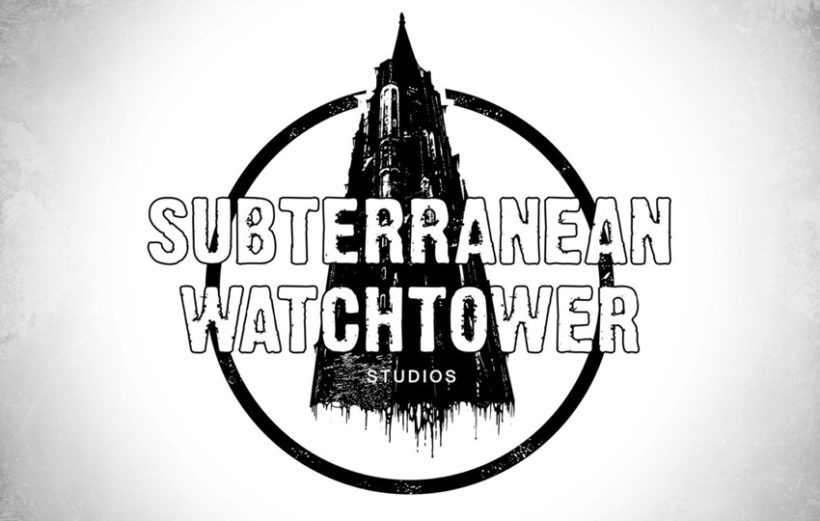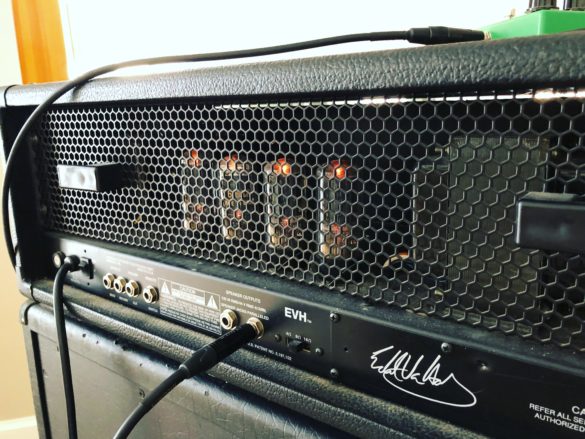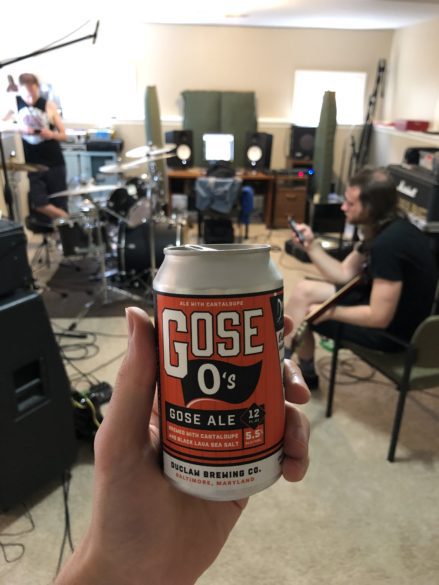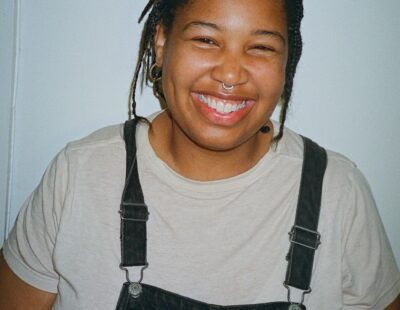
You may have noticed that a lot of albums lately have undergone ‘reamping.’ Now unless you’re a guitarist in a band or a studio engineer yourself, you probably only have a vague notion of what the term ‘reamping’ really means. Perhaps you’ve never scratched your head and wondered ‘what exactly is reamping?,’ but after reading that the stunning debut album from American death metallers Voidceremony (out June 26 on 20 Buck Spin) was reamped by Damian Herring, we took it upon ourselves to reach out to our old friend once again to see if he could help us understand what reamping means.
First of all, Damian, how did you get into recording bands to begin with?
I began recording my own music in the mid-2000s and other bands starting around 2007 or so. In 2009, I recorded, mixed, and mastered Horrendous’ demo Sweet Blasphemies, and that was basically the beginning of my “mixing career.” Once I uploaded our demo online, I started getting mixing and mastering work from other bands who liked how our demo sounded. Over time, I started getting more bands who had recorded DIs, and I started offering reamping as well.
So what is reamping, and why is it something bands would want to have done?
Reamping is the process of playing a previously-recorded signal through an amplifier. You could “reamp” anything, but most of the time, we’re talking about reamping a guitar track. In a typical recording scenario, a guitar is plugged into an amp and speaker cabinet, and the speakers are miked up and that signal is recorded.
Another way to record a guitar, however, is to capture the raw sound of the guitar pickups (called a DI or direct inject [or ‘direct input]). In a reamping situation, you take the recorded DI and run it through a reamp device and then into a guitar rig. Then you record that amped signal (by placing a mic on the speaker cabinet) just like in the first example. It’s as if the guitarist is right there performing in the same room, but he/she could actually be thousands of miles away, or have recorded the parts years ago. You’re simply playing back the previously recorded material, and re-recording it with an amp.

Reamping is very common these days because it gives you a lot of flexibility. The benefit is that you only have to capture the player’s performance once as a DI. Once you have the DI, you have the “purest” form of the performance and can reamp it at any time. This allows you to experiment all you want with the final tone.
In a way, capturing a DI can be thought of as recording a “backup.” If you’re recording an album without a DI and half-way through you decide the guitar tone sucks, you would have to go back and re-record everything. If you’ve recorded DIs, however, you can scrap the amped tracks, and the guitarist doesn’t have to go back and record all those parts again. That’s because you can use the DI you recorded to reamp through new amp settings, a different amp, a different cab, a different mic or mic position, etc.
Another draw of reamping is convenience. Recording a DI is something you can do at home with minimal equipment. And if you’ll be sending your DIs off to be reamped, you don’t even need to own a guitar amp, let alone the rest of the necessary recording equipment.
There are lots of reasons bands might want to go the reamping route: they can’t or don’t want to record their own guitar tones, they know someone else could get a better tone, they like the guitar tones a particular engineer has gotten, they don’t want to spend time and money in a professional studio recording their parts, they want to be able to record their songs without worrying about what the final tone will be, etc.

So when you’re reamping an album are the guitar lines coming out through your amp at a loud volume then?
Yes. Floors are usually rattling, and sometimes the knobs on the amp fly off. You don’t have to record at a really loud volume, though. Some amps “open up” past a certain level, but contrary to a lot of tube amp folklore, cranking the volume doesn’t always result in a better tone, especially in a death metal context where most of the gain is usually coming from the preamp (not the power amp, which the master volume controls).
Including hardware and non-musical equipment, e.g. privacy and space, what all does someone need to perform professional reamping?
You need an amp, a cab, and a reamp device. There are lots of different reamping options out there, but basically they convert a line level signal sent out from your DAW/computer/audio interface to an instrument level signal, as if it were coming from a guitar. Then obviously you need the rest of the recording chain: mic(s), cable, preamp/converter/audio interface, computer/DAW, etc.
Having some space and privacy is nice if you don’t want angry neighbors. That said, technically you could “reamp” through a software-based guitar amp simulator and not create any noise at all. You also wouldn’t need a reamp box in that scenario.
What got you personally started in reamping, and how did you learn how to do it?
I’ve been reamping pretty much since the beginning of my recording career around 2007 or so. I’m sure I read it about it on a forum (probably the famous Andy Sneap board), and the appeal was obvious—endless flexibility and no commitment. When I was just starting out, I wasn’t confident in my abilities to capture a good guitar tone on the first try, and I knew that by capturing a DI, I’d get unlimited chances to re-do the guitar tone at a later point without needing the band to come back in to record again.

So how do you go about building a band’s guitar sound? Is there a lot of back and forth with the band, or is it more like when a band hires an illustrator and they just sit back and wait to hear what their tone’s gonna sound like?
The best way is simply to ask what they’re looking for. And rather than relying on subjective, vague words like “warm” and “aggressive,” the best way of finding out is to ask them for album references. In other words, you ask them what guitar tones they like on which albums. It’s impossible to match a tone exactly, but at least this can give you some sense of what they’re looking for and help you shape the tone.
That said, I have to assume bands are asking me to reamp because they like the tones I’ve gotten on other albums I’ve produced. So if a band doesn’t have any specific references, I’ll usually start with my “standard” go-to setup and adjust by ear from there based on the musical style, the tone of the DI, etc. I like to make it fun, too, so I’ll usually experiment with something new on each reamping job, whether it be a new pedal, a different mic than usual, or even a different mic technique/position.
As far as back and forth goes, that depends on the band. Most are fine to give me some references and then let me do my thing. That said, I do like to share the general tone and make sure they don’t hate it before I reamp an entire album haha.
Can you share with us some fire you’ve worked on recently that we need to know about it?
I’ve recently completed work on the debut VoidCeremony album. Not only is the album excellent, but this project was especially cool to me because it’s the second time I’ve gotten to work on music featuring Damon Good on bass (the first being Blood Incantation’s Interdimensional Extinction EP). Damon’s work in Mournful Congregation is particularly meaningful to me, so it’s an honor to work on anything in which he’s played a role.
Other recent projects include Bear Mace, Judicator, Void Rot, and Rope Sect, among many others.
Okay, but what if my tone sounds too good? Can you make my riffs fit in with the lo-fi raw black metal crowd, too? Seriously, if someone wanted to do that, what would you do and how would you go about doing it?
No one has ever asked me to do that, and I wish they would. I’ve always wanted to reamp through the Crate practice amp combo I used growing up and see what happens haha. I bet I could end up with some gnarly tones.






